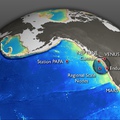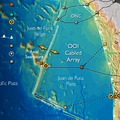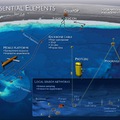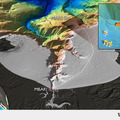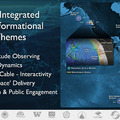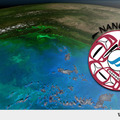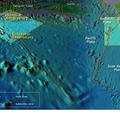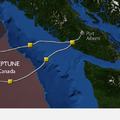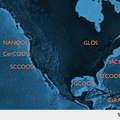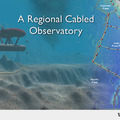The oceans connect all continents; they are owned by no one, yet they belong to us all.
We must understand the oceans to optimize the benefits and mitigate the hazards of living on the Ocean Planet.
- The oceans are complex, difficult to study, and largely unexplored
- The oceans cover nearly 70% of the planet and are central to the quality of life on Earth
- The dynamic behavior of the oceans drives many land-based ecosystems on the planet
- There are bold new approaches to studying the ocean
- By 2020 these new approaches can revolutionize humanity's perception and uses of our planetary ocean.
The ocean presents major obstacles to human exploration: it is vast, extends to a depth of 11,000 m, is impacted by huge storms, and is highly dynamic. Humans can visit the depths for only short periods of time. Satellites can probe only the few meters of the surface, and light only travels a few hundred meters in the dark waters below.
A Human Telepresence in the Oceans
Recent technological advances are transforming approaches to studying, interacting with, and understanding the oceans. The historical focus on expeditionary science using ships is expanding to include a permanent human telepresence in the oceans. Among the bold new approaches are cabled ocean observatories that connect state-of-the-art instruments to high-power and high-bandwidth networks permanently installed throughout the oceans. These networks communicate nearly instantly with scientists, educators, and the public on land and carry out real-time user commands and complex pre-programmed instructions. These long-term observatories provide continuous and real-time local investigations of global ocean phenomena that are crucial to maintaining the habitability of the planet.
The U.S. National Science Foundation's Ocean Observatories Initiative is leading U.S. efforts to construct these long-term, cutting-edge observatories oriented to research and education.
Why Are the Oceans Important?
The global ocean is the last physical frontier on Earth. It covers 70 percent of the planetary surface and 60 percent of the Earth's volcanic activity occurs beneath the ocean's surface. It is the largest, most complex biome we know of and hosts some of the most extreme environments on earth - submarine hot springs that reach >400°C. It is a vast, mobile reservoir of heat and chemical mass. As such, it is the "engine" that drives weather-climate systems from the ocean basins onto the continents, directly affecting food production on land and the health of our planet.
The ocean is the ultimate repository of human waste. The ocean has absorbed nearly half of the fossil carbon released since the onset of the Industrial Revolution. The ocean basins can be a source of hazards; earthquakes, tsunamis, and giant storms are episodic, powerful, often highly mobile, and commonly unpredictable. Because it is a vast, but finite, repository of living and non-living resources, we turn to the global ocean for food, energy, and many minerals necessary to sustain a broad range of human life styles. Many scientists believe that underwater volcanoes were the crucible in which early life began on Earth, and, perhaps, on other planets.
The oceans connect all continents; they are owned by no one, yet they belong to us all by virtue of their mobile nature. The oceans may be viewed as the common heritage of humankind, the responsibility and life support of us all. Increased stresses on the planet by ever-growing human populations mean that it is crucial to understand the long- and short-term temporal variations and the complexities of ocean dynamics.

